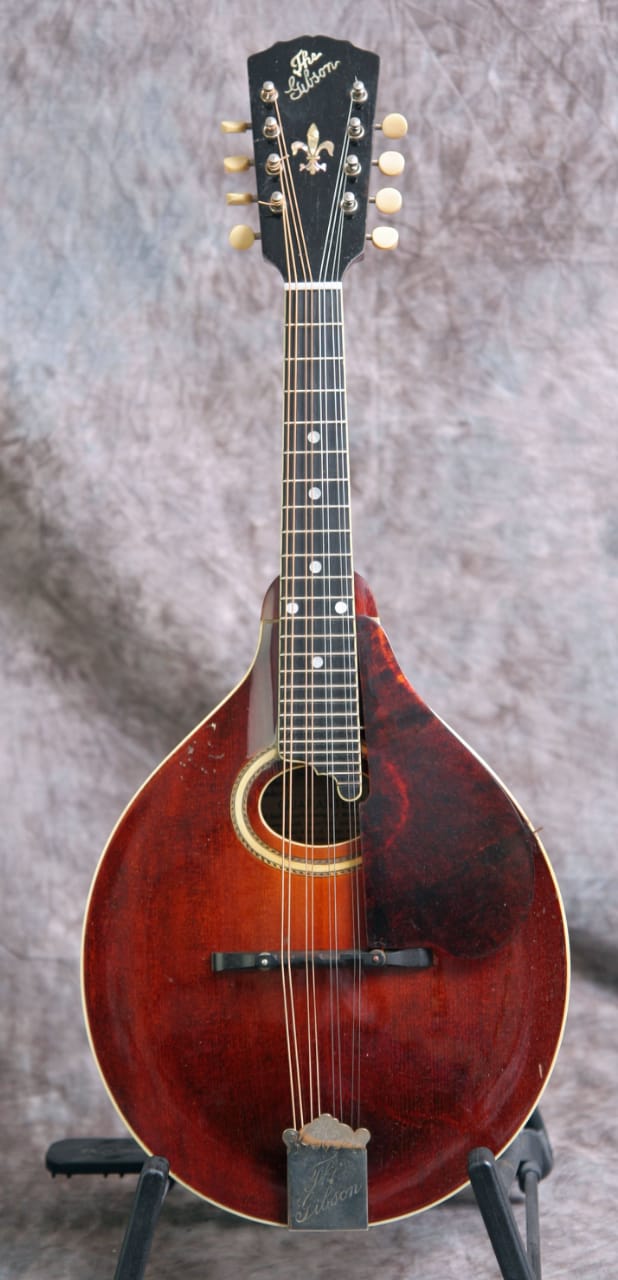Mandolin-One of the Best Stringed Musical Instruments

Mandolin-
One of the Best Stringed Musical Instruments
Abstract
Mandolin is a stringed musical instrument in the lute family and is generally plucked with a plectrum. It most commonly has four courses of doubled metal strings tuned in unison, thus giving a total of 8 strings, The courses are typically tuned in a interval of perfect fifths, with the same tuning as a violin (G3, D4, A4, E5). There are many styles of mandolin, but the three most common types are the Neapolitan or round-backed mandolin, the arch top mandolin and the flat-backed mandolin. The round-backed version has a deep bottom, constructed of strips of wood, glued together into a bowl. The arch top, also known as the carved-top mandolin has an arched top and a shallower, arched back both carved out of wood. The flat-backed mandolin uses thin sheets of wood for the body, braced on the inside for strength.
Much of mandolin development revolved around the soundboard (the top). However, modern instruments are louder, using metal strings, which exert more pressure than the gut strings. The modern soundboard is designed to withstand the pressure of metal strings. The soundboard comes in many shapes—but generally round or teardrop-shaped, sometimes with scrolls or other projections. There are usually one or more sound holes in the soundboard, either round, oval, or shaped like a calligraphic f (f-hole). A round or oval sound hole may be covered or bordered with decorative rosettes or purfling.
Mandolins have a body that acts as a resonator, attached to a neck. Strings run between mechanical tuning machines at the top of the neck to a tailpiece that anchors the other end of the strings. The strings are suspended over the neck and soundboard and pass over a floating bridge. The bridge is kept in contact with the soundboard by the downward pressure from the strings. The neck is either flat or has a slight radius, and is covered with a fingerboard with frets. The action of the strings on the bridge causes the soundboard to vibrate, producing sound.
Like any plucked instrument, mandolin notes decay to silence rather than sound out continuously as with a bowed note on a violin, and mandolin notes decay faster than larger chordophones like the guitar. This encourages the use of tremolo (rapid picking of one or more pairs of strings) to create sustained notes or chords. The mandolin’s paired strings facilitate this technique: the plectrum (pick) strikes each of a pair of strings alternately, providing a more full and continuous sound than a single string would.
Tuning:
A variety of different tunings are used. Usually, courses of 2 adjacent strings are tuned in unison. By far the most common tuning is the same as violin tuning, in scientific pitch notation G3–D4–A4–E5, or in Helmholtz pitch notation: g–d′–a′–e″.
- fourth (lowest tone) course: G3(196.00 Hz)
- third course: D4(293.66 Hz)
- second course: A4(440.00 Hz; A above middle C)
- first (highest tone) course: E5(659.25 Hz)
Note that the numbers of Hz shown above assume a 440 Hz A, standard in most parts of the western world. Some players use an A up to 10 Hz above or below a 440, mainly outside the United States.
The mandolin scale length is typically about 13 inches (330 mm). Modern American mandolins modelled after Gibsons have a longer scale, about 13 7⁄8 inches (350 mm). The strings in each of its double-strung courses are tuned in unison.
1919 Gibson A4 Mandolin
The A-4 was the top of the line A style mandolin for Gibson in 1919. It has the true red sunburst top finish and reddish back and sides, pearl peghead inlay and logo, bound top and back, and a bound ebony fingerboard with treble extension. The hardware and finish are original. Nice big woody sound from this mandolin with good bass! Neck is straight, neck angle is good and the frets show very little wear. No repairs or refinish noted. Action is low and playable and it has a good ringing sound.
PROJECT INFO.
- -Presented at: -
- DATE RELEASED: -
- CATEGORIES: Music and Musical research
- TAGS: Music,